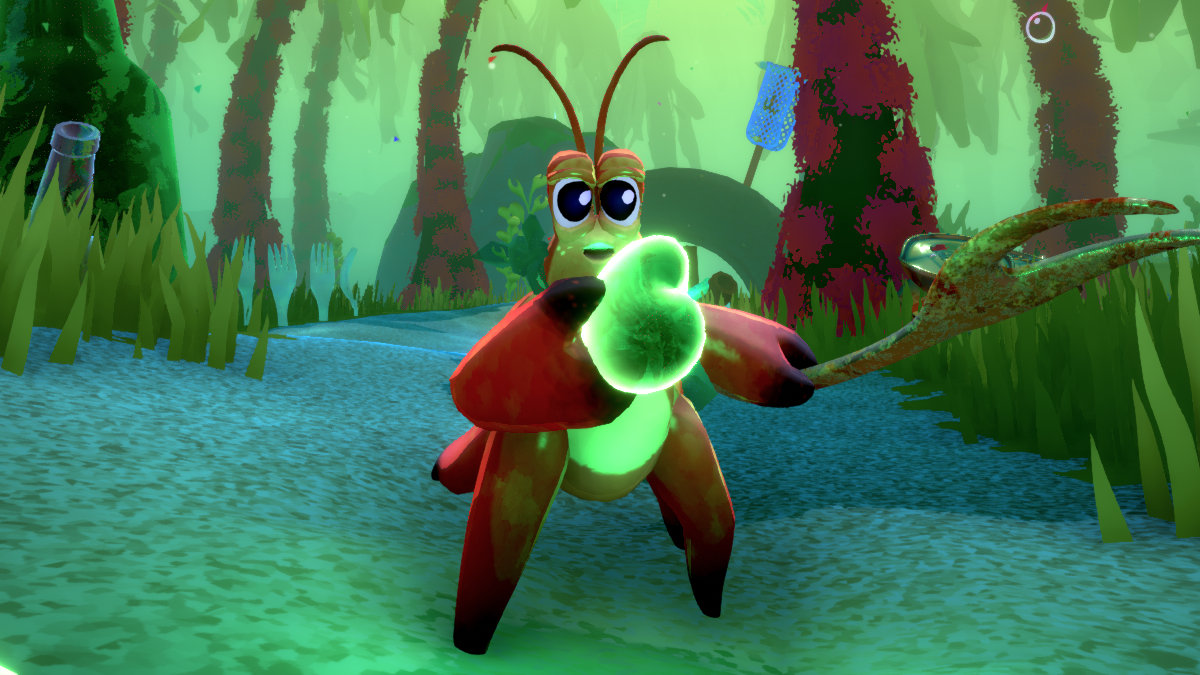As with virtually all fighting games, Killer Instinct can be seen through two different eyes. You have the eyes of the novice, who believe certain aspects of the game are “cheap” and “unfair,” or who believe the game caters to “scrubs.” Then you have the high-level, tournament-hardened players who dig deep into the game system to find strategies that only the best players will utilize and understand.
This unofficial Jago guide is designed for advanced players who already know the basics and are looking to take their game to the next level. If you don’t understand the KI system mechanics, check out our How to Play and Beginner’s Tips articles. If you want to get a little more in-depth than that, read up on Jago’s frame data. This article assumes you already know everything from the more basic articles.
Frame Traps Galore
While every character in Killer Instinct has the ability to use frame traps, you can model Jago’s entire play style around this strategy. Taking a quick look at his move list shows a plethora of opportunities to use frame traps. Let’s start by looking at a few of them.
The medium and heavy versions of the Laser Sword are +1 and +2 respectively when blocked. While the light version is -1, it looks similar enough to the medium version to effectively use it as frame advantage. Most opponents won’t risk attacking if they have a hard time determining which version of the attack you used.
The Double Roundhouse is +3 when blocked, and can be canceled into any of Jago’s special moves. This creates a frame trap on its own. The opponent has to guess whether or not Jago will cancel the Double Roundhouse into a special move, or use it as a frame trap with a normal. There are even more options when you factor in a throw, neutral jump or cross-up jump after a blocked Double Roundhouse. These same options are also available after a blocked Laser Sword, but you’re generally closer to the opponent after a blocked Double Roundhouse, which makes the mix-ups more potent.
Looking at Jago’s Normals, his close and far standing light kick and crouching light punch are all +2 when blocked, while his standing close medium kick and crouching light and medium kick are all +1 when blocked. With Jago’s standing and crouching light punch and crouching light kick all executing in 4 frames, they are prime attacks to use when Jago has frame advantage.
Those are the basics, but let’s take things a step further. Once an opponent knows not to attack after blocking any of these frame advantage Normals and special moves, you can start working in tick throws (following a few Normals with a throw), neutral jumps, and cross-up jumps. Of course none of these options lead to a solid combo against a skilled opponent, so let’s add to the meta game one more time.
End your frame advantage by using an attack that does not leave Jago at an advantage. Cancel into a light Wind Kick or something similar that’s relatively safe, but doesn’t have frame advantage. At this point, the opponent probably thinks it’s their turn to attack. In most cases, their offense will start with a low attack.
Test the opponent a few times to see if they bite by attacking low after blocking a light Wind Kick. If they bite, the next time it happens, follow the blocked light Wind Kick with another light Wind Kick. A Wind Kick is invincible to low attacks, which means even though Jago is at a disadvantage, the Wind Kick will ignore the low attack and start a combo.
Add all of this up and you’ve got basic frame traps into other Normals, special moves with frame advantage, tick throws, neutral and cross-up jumps, then special moves that leave Jago at a disadvantage, but bait an opponent into attacking low.
Punish Everything!
Jago and Orchid have a unique special move that allows them to punish attacks that would normally be safe against other characters. Jago’s Tiger Fury and Orchid’s Air Buster both execute in 2 frames and have invincibility frames during the startup. With the exception of Sabrewulf’s light Eclipse (which executes in 3 frames), the fastest attack for any character outside of Jago and Orchid is 4 frames. This means that most players think any attack that’s -3 or better when blocked is safe to use. They would be wrong.
All four versions of Glacius’ Cold Shoulder, every version of Orchid’s Flick Flack, and all of Sadira’s Blade Demon variants can be punished by a Tiger Fury. In some situations there may be too much push back to connect a Tiger Fury, but that depends on how far away the character is when the attack is initiated, as well as which version of the attack is used. However, at the very least, it’s situational use to make these attacks safe against Jago. More often than not, they can be punished.
It’s always recommended to use the light Tiger Fury when attempting to punish these attacks. If you miss the timing of your punish, the light Tiger Fury leaves Jago in the air for the shortest amount of time. While most skilled players will still be able to punish Jago, there are times when an opponent will miss an opportunity to punish because you used the light Tiger fury.
In addition to raw punishment of attacks that most believe are safe, you can use the invincibility frames at the start of the Tiger Fury to take a risk and preemptively punish an opponent. This is similar to how you would use Jago’s Wind Kick to go through crouching attacks. Use an attack that is negative when blocked, but still leaves Jago safe (such as the light Wind Kick). After blocking the attack, most opponents will assume it’s their turn to attack. This is where you use a light Tiger Fury. The speed, coupled with the invincibility frames, allows the Tiger Fury to interrupt the opponent’s attack.
You won’t get a ton of damage from this situation unless you have the opponent cornered or decide to use Instinct mode, but it will make the opponent think twice about attacking when it would normally be their turn to take the initiative. Couple this with the fact that most character’s move list is cut short due to being punishable by Tiger Fury, and you’ve crippled an opponent’s basic game plan.
Always Have Meter
Not all characters are created equal and Jago is no exception. He’s one of the few characters who has a battery Ender. Because of this, there’s no reason to be without meter. For the most part, every combo should end with Jago’s heavy Endokuken to refill a portion of his Shadow meter.
If you have the combo Ender boxes completely filled, Jago gets one full stock of Shadow meter. To make full use of this, virtually every combo should consist of a Shadow Linker and end with the battery Ender. The only exceptions to this would be if you can finish off an opponent with the max damage Tiger Fury Ender, if you already have a full Shadow meter, or if you’re fearful of a Shadow Breaker.
If you have a full Shadow meter, try to use a Shadow attack at some point during the combo. Keeping a full meter means you aren’t building any meter. Since Jago is a battery character, you should be building meter as often as possible. If you aren’t using Shadow Linkers or Enders in your combos, you’re essentially wasting meter.
If you’re fearful of a Shadow Breaker, wait for a lockout to use a Shadow Linker, or end your combo with a Shadow Tiger Fury. Under optimal circumstances, you want to come out of every combo with at least one stock of meter. Whether that’s using a Shadow Linker and replenishing your meter with the battery Ender, or ending your combo with a Shadow Tiger Fury if you already have a full meter.
In addition to Jago’s battery Ender, he has two other ways he can build meter quickly. From across the screen he can throw Endokuken projectiles. It only takes a few blocked projectiles to build a full Shadow meter. At close range, Jago can use his frame advantage to chain together lengthy block strings. The best way to build meter is to get a opponent to block your attacks. This is even more effective with Instinct mode active.
The bottom line is simple. Jago should always have meter to burn to get extra damage. If you find yourself without at least one stock of Shadow meter, you’re doing something wrong.
Manuals Around the World
As high level play evolves, it will become commonplace to use Manuals in place of Auto-Doubles. However, Jago has an alternate option. He can chain Auto-Doubles similar to Sabrewulf’s Rabid Bites, except that he can’t simply repeat the same Auto-Double like Sabrewulf. While this can throw an opponent off at first, most skilled opponents will know the order of Jago’s Around the World Auto-Doubles, and know what to break next before they even see the animation.
While Around the World has its uses, Jago will eventually need to rely on Manuals just like every other character. Luckily for him, even though his crouching medium punch is relative easy to link after most of his Openers and Linkers, he gets even more variety when his Instinct is active.
Even without Instinct mode, after almost all of Jagos Openers and Linkers, he can link almost any Normal as a Manual, including his Double Roundhouse (although that’s a bad Manual to use since it can be broken with relative ease). As long as Jago is close enough to the opponent to use his close Normals, he can basically Manual any Normal off of any Opener or Linker with a few exceptions when using the heavy Wind Kick Opener or light Wind Kick Linker. You have your choice of options to make an already difficult break even harder for your opponent.
Once an opponent is trained to expect Manuals, mix in an Auto-Double to bait a Combo Breaker, then answer with a Counter Breaker. The strength of the Auto-Double should depend on the skill of your opponent. As the meta game evolves, smart players will expect a Combo Breaker bait when a heavy Auto-Double is used, and they won’t bite. However, if you have them trained to expect Manuals, then tossing in a medium Auto-Double should give them more incentive to attempt a Combo Breaker. By that point, they should be fairly desperate to land a Combo Breaker, especially if their red health bar is almost depleted.
Instinct is Healthy for You
Jago’s Instinct mode has two specific traits. It replenishes roughly 20 percent of his health and adds +2 frames to all of his attacks on hit and when blocked. To make proper use of the health regeneration, Jago must be moving forward or attacking the opponent. For this reason, always keep a close eye on your Instinct meter. As soon as it’s available, be ready to use it in the next combo.
As soon as you score a lockout, activate Instinct mode and continue your combo. The only exception to this would be if you happen to be close to full health. You can also wait to use Instinct at the end of an opponent’s first health bar. As soon as the opponent’s health bar is completely gone and they cannot use a Combo Breaker, activate Instinct and start your combo over. Use Shadow Linkers if need be to extend the combo for as long as possible so Jago regains as much health as possible. Just remember to end the combo with the battery Ender to make up for the Shadow meter usage.
If you still have Instinct time remaining by the end of your combo, walk toward the opponent until the next round begins. Even between rounds, Jago can regain health so long as he’s moving forward. In some cases this requires moving left and right over the downed body of your opponent until they get back up. The point is to use Jago’s Instinct early to replenish health, then again in the second round soon after it’s available. You can regain roughly 40 percent health between the two Instinct uses. Don’t lose the match without gaining back as much of that 40 percent as you can.
While replenishing health is an important part of Jago’s Instinct, the +2 frames on everything is also crucial. It allows for much easier use of Manuals during combos, and allows him to chain together nearly infinite block strings. Not only does this build a great deal of meter, it also makes an opponent antsy. Make them block for an extended period of time, and they’ll want to attack or move away from Jago. Toss in a throw and they’ll be even more concerned.
Of course, you can also bait an opponent into attacking by using the newly found frame data to your advantage. For example, Jago’s light Wind Kick is normally -2 when blocked. In Instinct mode it’s 0 when blocked, which makes it a great frame trap since most opponents think it’s safe to attack after blocking the Wind Kick. A heavy Laser Sword shifts from +2 when blocked to +4, which means it can be chained into any of Jago’s 4-frame Normals, which can then be canceled right back into a heavy Laser Sword or light Wind Kick to repeat the process.
To summarize, once Jago’s Instinct mode is active, if you’re in the middle of a combo, you should be able to use consecutive Manuals to make it extremely difficult to break, all while regaining health. Outside of a combo, you can chain together a long series of Normals and special moves that cannot be interrupted, all while regaining health and building meter. And if you want to catch an opponent off guard, use a throw in the midst of that block string.




